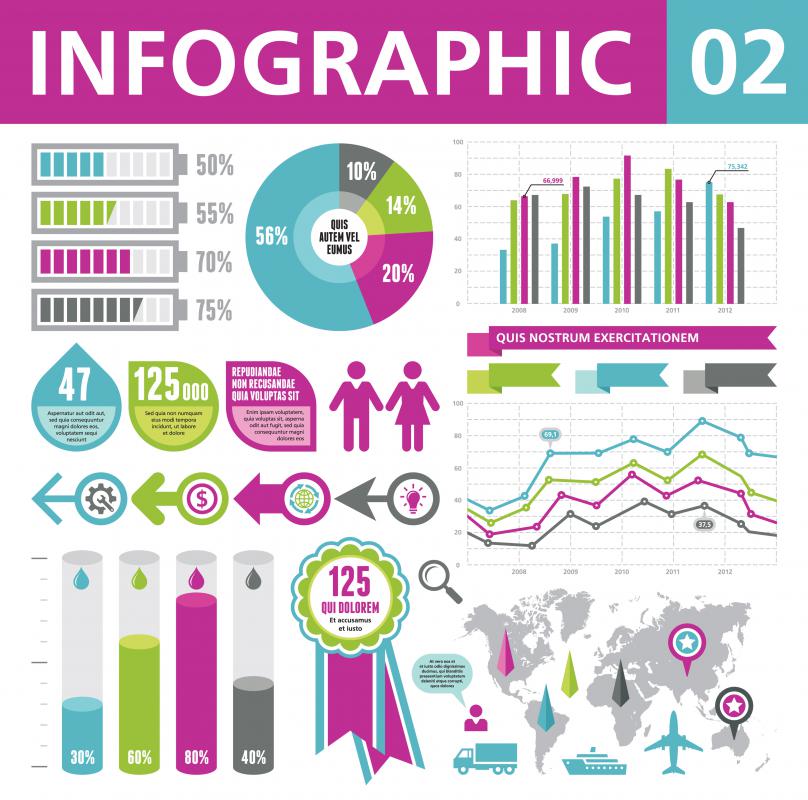At PracticalAdultInsights, we're committed to delivering accurate, trustworthy information. Our expert-authored content is rigorously fact-checked and sourced from credible authorities. Discover how we uphold the highest standards in providing you with reliable knowledge.
What is Visual Learning?
Many educators generally adjust their lessons to three basic learning styles: auditory learning, in which the student learns best by hearing; kinesthetic learning, in which the student learns best through hands-on activities and movement; and visual learning, in which the student learns best by seeing examples and using graphic organizers. Each learning style requires that the lessons be adjusted significantly or slightly to accommodate different learning styles.
A visual learning student will thrive in situations that call for graphic organizers — that is, visual representations of topics or ideas. For example, in order to describe the concept of buoyancy — how objects float — a visual learning student would be helped by a picture of a boat floating in the sea, juxtaposed with another picture of a rock sinking to the bottom of the sea. The images help the visual learning student process the concept in a manner best suited to his or her learning style. The student will understand the concept better with the pictures than he or she would if, for example, the definition of buoyancy was simply read aloud from a text. Simple graphics are best, as more complex graphics may confuse the learner, or bog him or her down in too much information.

Graphs and charts are examples of graphic organizers that can best help a visual learning student. When processing information, a student may be able to understand relationships and concepts better if he or she can plot them on a graph or chart, or see them in a photograph or illustration. When dealing with literature, a visual learning student would be greatly aided by a plot diagram, such as the plot pyramid, that shows the rising action, the climax of the story, and the falling action. Such organizers can help with retention of information, organization of details, and comprehension of simple and complex texts.

Identifying a student as a visual learner is an important first step in recognizing methods for effectively teaching that student, but it is not the only step. If a student falls into the category of visual learner, the teacher may now have a set of guidelines by which he or she can begin to help the student learn, but as is the case with most teaching and learning methods, the teacher must consider that each student is different and will have his or her own strengths and weaknesses. Graphic organizers are a start, but from there, the teacher must determine how to make the graphic organizers work effectively for the individual student.
AS FEATURED ON:
AS FEATURED ON:













Discussion Comments
@Fa5t3r - It's very important to make sure kids get a chance to try their hand at everything, but I don't think including visual learning tools in a classroom is going to take away from their ability to learn in other ways.
These days all students will have more than enough practice on essays and written work. It's the visual learners who need to given a boost because they simply don't have much of a chance right now.
@clintflint - The glaring problem with that is that if you allow students to choose their own learning strategies every time they will always go with their strengths and they will never develop their weaknesses.
It might be true, for example, that they can display their learning better as a series of pictures, but that deprives them of a chance to practice getting better at writing essays, which many of them will need to know one day, as it translates into various types of reports and office work.
Students learn by doing and if all they are doing is watching documentaries then they will only ever learn to pick up information that way, instead of every other way they need to know.
I am a big fan of the idea that students should be allowed to figure out how they learn best and be allowed to exploit that knowledge with each new subject. If they are learning about dinosaurs, for example, give them the basics in various forms and then give them a bunch of different sources of information for their own research. If they are visual learners, they will gravitate towards the pictures and graphs and documentaries naturally.
Often visual learners will display their learning best in a visual style as well, so don't let them watch documentaries and then force them to write an essay. If they would rather present their research in the form of a series of captioned illustrations, for example, does it really matter, as long as they can demonstrate they know the topic?
Post your comments